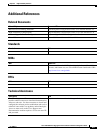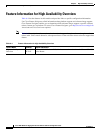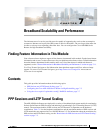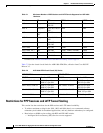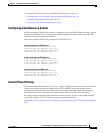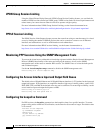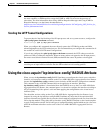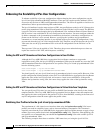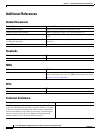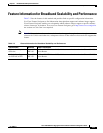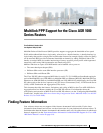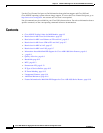
7-7
Cisco ASR 1000 Series Aggregation Services Routers Software Configuration Guide
OL-16506-17
Chapter 7 Broadband Scalability and Performance
Using the cisco-avpair="lcp:interface-config" RADIUS Attribute
Note For IP sessions, the keepalives are not enabled by default. Enabling keepalives for IP sessions provides
the same capability as PPP keepalives except that ICMP or ARP is used to test the presence of
subscribers. For more information about Using ARP for Keepalive Messages and Using ICMP for
Keepalive Messages, see the feature documentation at:
http://www.cisco.com/en/US/docs/ios-xml/ios/isg/configuration/xe-3s/Configuring_ISG_Policies_for_
Session_Maintenance.html
Scaling the L2TP Tunnel Configurations
To prevent head-of-the-line blocking of the IP input process and save system resources, configure the
vpdn ip udp ignore checksum command:
Router(config)# vpdn ip udp ignore checksum
When you configure this command, the router directly queues the L2TP Hello packets and Hello
acknowledgements to the L2TP control process. We recommend that you configure this command in all
the scaled LAC and LNS L2TP tunnel configurations.
If you do not configure the vpdn ip udp ignore checksum command, the L2TP software sends the
packets to UDP to validate the checksum. When too many packets are queued to the IP input process,
the router starts Selective Packet Discard (SPD) mechanism that causes IP packets to be dropped.
Note Head-of-the-line blocking of the IP input process might occur in other nonL2TP configurations. A flush
occurring on an input interface indicates that the SPD mechanism is discarding packets.
Using the cisco-avpair="lcp:interface-config" RADIUS Attribute
When you use the lcp:interface-config RADIUS attribute to reconfigure the virtual access subscriber
interface, call setup rate could be reduced on the Cisco ASR 1000 Series Aggregation Services Routers
because the lcp:interface-config command syntax includes an IOS interface configuration command.
This command is any valid IOS command that can be applied to an interface. When the
lcp:interface-config attribute is downloaded from the RADIUS server to the Cisco ASR 1000 Series
Aggregation Services Routers, the command parser is activated to configure the interface according to
AV-pair, determining if the option is valid and then applying the configuration to the virtual access
interface (VAI).
The subscriber session scaling on the Cisco ASR 1000 Series Aggregation Services Routers is not
impacted by using the lcp:interface-config RADIUS attribute any more than if the equivalent IOS
interface command was applied directly onto the virtual-template configuration and was cloned onto the
VAI using that method. Using either the lcp:interface-config RADIUS attribute or the virtual-template
to apply configuration onto the VAI it is the type of configuration being applied which may in a few cases
affect the maximum subscriber session scale of the Cisco ASR 1000 Series Aggregation Services
Routers.



